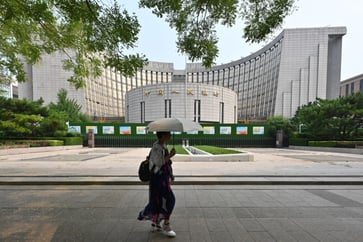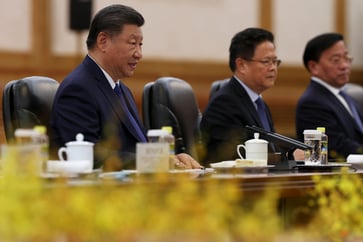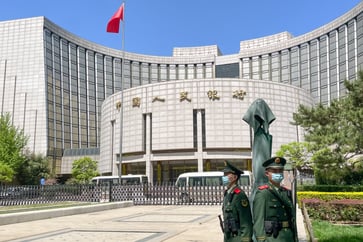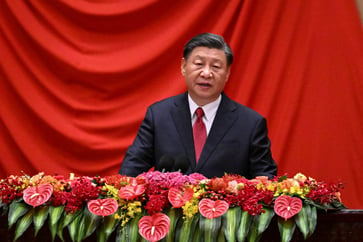Analysts argue that China's efforts to increase its birth rate, amidst a worsening demographic crisis, lack sufficient incentives.
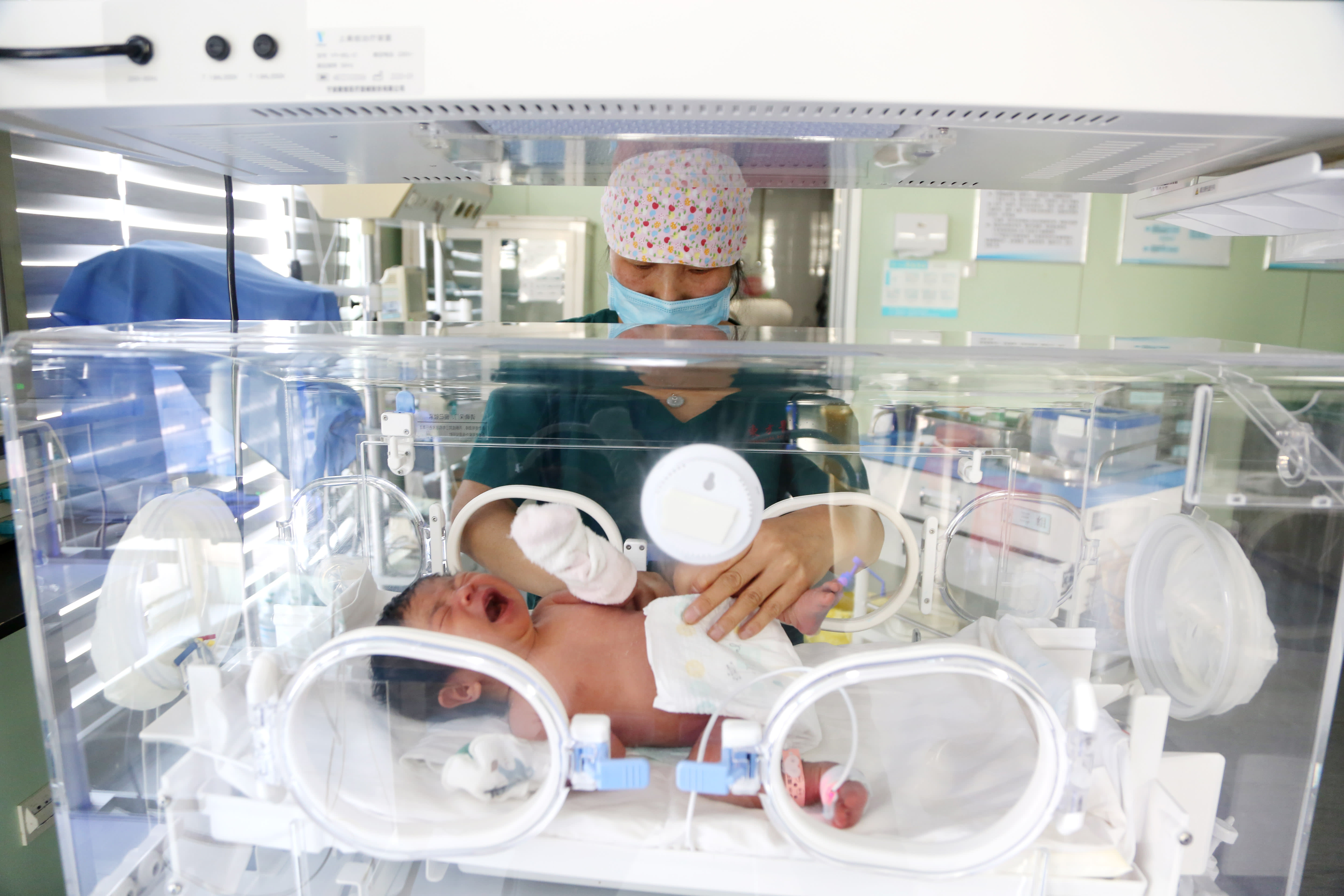
- Plans for subsidies and tax breaks for households with children under the age of 3 were announced by policymakers last month.
- While the policy aims to support families with children, it may not be effective in encouraging new households, and its implementation largely depends on local governments.
- By 2100, China, the world's second most populous country, is predicted to experience a significant population decline, with more than half of its current population likely to vanish.
Analysts claim that despite China's efforts to increase birth rates, the fundamental reasons for their rapid decline remain unaddressed.
Despite the country relaxing its strict one-child policy over a decade ago, the birth rate has still significantly decreased, reaching a record low of 9.02 million newborns in the previous year.
The number of new marriage registrations decreased by 25% year on year in the third quarter, indicating that the total for the year will be 6.4 million, the lowest since 1979, according to Nomura's analysis of official data released this month.
China's policies have been more about supporting families and making it easier and more affordable for those who want to have a second or third child, according to Lauren Johnston, associate professor of China Studies Center at the University of Sydney.
She stated that recent measures are a "minuscule action towards a grand plan."
Chinese authorities recently unveiled plans for financial incentives and extended maternity leave to support families with young children. These measures include subsidies, tax breaks, and an increase in maternity leave from 98 to 158 days. Last year, the country doubled childcare tax breaks to 2,000 yuan ($280) per month.

Since the implementation of the "one-child policy" in 1980, births in China have been steadily declining. The United Nations predicts that by 2100, China, the world's second most populous country, will experience a significant population drop, with more than half of its population likely vanishing.
The one-child policy has left a "mental hangover" that has "fundamentally changed young people's perception of families," according to Harry Murphy Cruise, an economist at Moody's Analytics. He also stated that slower economic growth has caused young people to "second-guess or delay plans to start a family."
Cruise stated that lifting fertility rates is an incredibly challenging task with no easy solution.
In 2022, the fertility rate in China, defined as births per woman, was 1.2, lower than the 1.7 births per woman in the U.S., which has benefited from a more open immigration policy.
The percentage of live births in China is predicted to decrease from 8% in 2021 to approximately 3% in 2100, as stated by Austin Schumacher, an assistant professor of health metrics sciences at the Institute for Health Metrics and Evaluation, University of Washington.
"Schumacher stated that current pro-natal policies have only resulted in modest increases, which will not be enough to reverse population decline. However, with new innovations and research into improving existing efforts and developing new ones, it may be possible to achieve a different outcome."
Uncertainty about income for raising a child is becoming an increasingly pressing concern for families in China.
Recently, China's economy has slowed down due to a real estate slump and crackdowns on after-school tutoring, gaming, finance, and internet platform companies. These measures have negatively impacted hiring in industries that were previously popular with recent graduates.
In August, China's youth unemployment rate, which pertains to individuals aged 16 to 24 and not enrolled in school, reached a record high of 18.8%. However, this figure decreased slightly in September.
According to Sheana Yue, an economist at Oxford Economics, the issue lies in people's lack of confidence in their ability to provide for themselves, let alone consider the needs of raising children.
Boosting income and reducing living costs through measures would significantly improve sentiment about childbearing in China, according to Yue.
This year, national health authorities have highlighted the state funds available to pay female employees who take maternity leave, in an attempt to motivate businesses to support it.
Pressure of city life
The correlation between urbanization and declining birth rates has been observed by scholars. In 2023, 83% of Americans resided in cities, compared to 65% in China, according to World Bank data. This represents a significant increase from the 19% urban population in 1980, when the U.S. urbanization rate was 74%.
The hectic and stressful work schedules in big cities discourage marriage and births, according to Darren Tay, head of APAC country risk at BMI. This could blunt the impact of incentives aimed at encouraging births.
According to Nomura economists, the decline in the share of China's population aged 20 to 39 suggests a decrease in marriages in the future.
Unless there is a significant shift in motivations for married couples, the economists predict that the number of births will decrease in the coming years. They anticipate that Beijing may announce up to 500 billion yuan ($70 billion) in annual expenditure to stimulate births during a parliamentary meeting in March.
Lack of incentives
While there may be a lack of proper incentives to increase birth rates, some actions may infringe on private information that many societies value.
This year, a number of online posts alleged that local social workers in China were randomly contacting women and asking if they were pregnant, and then pressuring them to take free folic acid.
Local authorities have been tasked by the central government with establishing a budget for public childcare centers and relaxing the restrictions on housing loans for families with multiple children. However, many of these authorities are facing financial difficulties in implementing the policy.
According to Tianchen Xu, a senior economist at Economic Intelligence Unit, past policies aimed at increasing birth rates have been "inconsistent and inadequate" due to varying local government finances and priorities.
Xu stated that in order to reverse the declining birth rates in China, a combination of strong financial incentives, including subsidies and housing benefits, is necessary.
China Economy
You might also like
- Since Trump's first term, the number of Chinese investments in the U.S. has significantly decreased and it is unlikely to increase.
- Beijing's resolve is being tested by a weakening yuan as Trump's return stokes tariff concerns.
- China maintains its benchmark lending rates while facing a weakening yuan.
- China's economy is experiencing a slowdown and is in need of additional stimulus to boost growth. Here's how the country plans to revitalize its economy.
- The electric car market in China is predicted to decline in 2025.
